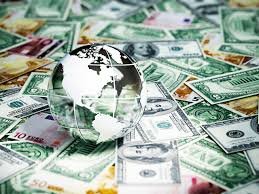The world of money
Money is the cornerstone of modern civilization. It powers economies, fuels dreams, and shapes societies. Yet, the world of money is undergoing a dramatic transformation, driven by technology, innovation, and changing societal values. From traditional currencies to digital assets, let’s dive into the evolving landscape of money and why understanding it is more crucial than ever.
What is Money?
At its core, money is a tool—a medium of exchange, a store of value, and a unit of account. Over centuries, money has taken many forms: shells, coins, paper currency, and now, digital currencies. But money is more than just a tool; it reflects trust, power, and opportunity.
The Evolution of Money
Barter System: Before money, trade relied on the direct exchange of goods and services—a cumbersome and inefficient process.
Metal Coins: The introduction of coins made trade simpler and introduced the concept of intrinsic value.
Paper Money: Backed by governments, paper currency became the dominant medium of exchange.
Digital Banking: Electronic transfers and credit systems revolutionized how we interact with money.
Cryptocurrencies: Blockchain-based digital assets like Bitcoin challenge the traditional systems, offering decentralization and transparency.
Challenges in the Traditional Monetary System
Centralization: Central banks and governments control the flow of money, leading to potential misuse of power and inflation.
Exclusion: Billions of people remain unbanked or underbanked, lacking access to essential financial services.
Inefficiency: Cross-border transactions are slow, expensive, and often riddled with bureaucratic red tape.
Debt Dependency: Many economies are burdened by debt, affecting global financial stability.
The Rise of Digital Currencies
Cryptocurrencies like Bitcoin, Ethereum, and others are reshaping the financial landscape. Built on blockchain technology, these digital assets offer:
Decentralization: Removing intermediaries like banks.
Transparency: Open, tamper-proof transaction ledgers.
Accessibility: Empowering the unbanked through peer-to-peer systems.
Global Reach: Enabling seamless international transactions.
However, this shift comes with challenges, including regulatory uncertainty, volatility, and the need for technological literacy.
The Future of Money
As we move forward, the world of money is likely to blend traditional and digital systems. Central bank digital currencies (CBDCs) are being explored by governments, while decentralized finance (DeFi) platforms are unlocking new financial possibilities. The focus is shifting toward inclusivity, efficiency, and sustainability.
How to Thrive in the Changing Financial Landscape
Educate Yourself: Stay informed about financial trends, cryptocurrencies, and investment strategies.
Diversify Investments: Explore traditional assets, digital currencies, and emerging markets.
Adopt Digital Tools: Leverage apps and platforms that make financial management easier and more accessible.
Advocate for Inclusion: Support initiatives that provide financial access to underserved populations.
Embrace Decentralization: Understand the power of blockchain and how it can democratize finance.
The Role of Blockchain in Money
Blockchain technology is a game-changer in the world of money. It promises transparency, security, and efficiency, making financial systems fairer and more accessible. Decentralized platforms like Steemit exemplify this shift by empowering creators and users directly, without intermediaries taking a cut.
The Path Forward
The world of money is at a crossroads. As technology continues to evolve, so too will our relationship with wealth and value. Whether through traditional banking, cryptocurrency, or decentralized platforms, the future of money will be shaped by innovation, inclusion, and empowerment.
What are your thoughts on the evolution of money? Let’s spark a conversation in the comments below!
Feel free to share this post to encourage discussions about the future of money and finance!
